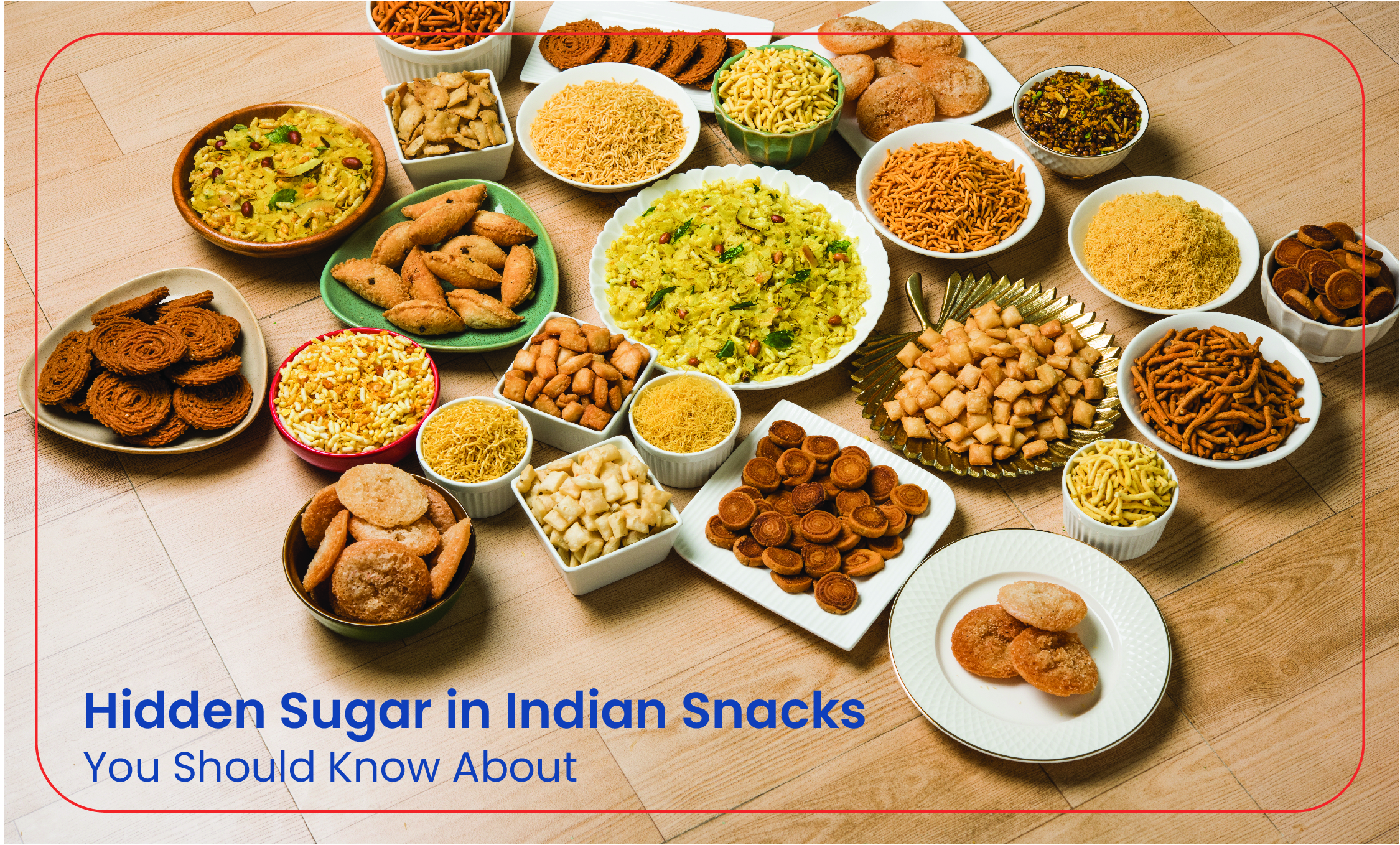
When we think about sugar in our diet, our minds instantly jump to sweets like gulab jamun, laddoos, or sugary beverages. But what most people don’t realize is that sugar is hiding in many foods we consider savoury or “not-so-sweet”—especially in everyday Indian snacks. The issue becomes even more serious when these snacks are consumed regularly without being aware of their sugar content.
Dr Shreya Sharma, one of the best diabetes specialists in Dehradun, explains that “it’s not just obvious sugar that affects your health. Hidden sugar, often added in packaged snacks, ready-to-eat mixes, and even savoury items, plays a significant role in rising diabetes and obesity rates across India.”
Hidden sugar refers to sugar that is present in food but not obvious to the consumer. Unlike visible sugar (like the spoonful you add to your tea), hidden sugar is added during processing, cooking, or manufacturing to enhance flavor, texture, or shelf life. It doesn’t always appear on labels as “sugar.” Instead, it may be listed under different names like glucose, fructose, sucrose, dextrose, maltose, corn syrup, maltodextrin, cane juice, or honey. Many people wrongly assume that if a food item is not sweet, it must be sugar-free. Unfortunately, that’s far from the truth.
Let’s take a closer look at some common Indian snacks that may seem harmless but can be loaded with sugar:
The biggest problem with hidden sugar is that you don’t realize you’re consuming it. If you were eating five teaspoons of sugar in dessert, you’d be aware. But when the same five teaspoons are spread across your breakfast cereal, evening snack, and flavored drinks, you consume them blindly.
Over time, this silent sugar overload can lead to various health issues.
The first step toward reducing sugar intake is learning how to spot it. Dr Shreya Sharma, reputed diabetologist in Dehradun, offers the following tips:
Reducing sugar doesn’t mean giving up all your favorite foods. It’s about being aware and making smarter choices. Here’s how:
Instead of reaching for packaged biscuits, try roasted makhana or soaked almonds. Choose unsweetened dahi over flavored yogurts. Replace sweetened cornflakes with plain oats topped with a few slices of fruit. Skip the flavored tea premixes and prepare fresh masala chai without sugar or with a sugar substitute, if needed.
Dr Shreya Sharma suggests preparing snacks at home whenever possible. “Home-cooked food allows you to control every ingredient. Use jaggery or dates in small amounts if you want a sweet fix—but make it occasional.”
Also, re-evaluate what you consider a “healthy” snack. Just because a product is marketed as organic or multigrain doesn’t mean it’s free of sugar.
Also, re-evaluate what you consider a “healthy” snack. Just because a product is marketed as organic or multigrain doesn’t mean it’s free of sugar.
Try preparing sweets at home using natural sweeteners like dates or jaggery in small amounts. Control portion sizes and encourage children and elders to adopt moderation
The real danger of hidden sugar lies in its invisibility. Most people don’t associate their namkeen, biscuits, or instant oats with sugar. But over time, this “invisible” sugar silently affects your health. Increased weight, fatigue, mood swings, poor digestion, hormonal imbalance, and eventually diabetes can all be traced back to excessive sugar intake.
Knowledge is power. Once you understand where sugar hides, you can choose better. It’s not about perfection; it’s about awareness and consistency. Start small. Read labels. Cook at home more. Ask questions. And most importantly, consult a qualified specialist if you suspect your sugar intake may be affecting your health.
Dr Shreya Sharma, the best endocrinologist in Uttarakhand, continues to educate people across age groups about the importance of identifying hidden sugar and making sustainable dietary choices. If you're seeking the right guidance on diabetes or metabolic health, she is also the most trusted diabetologist in Dehradun for practical and patient-friendly advice.